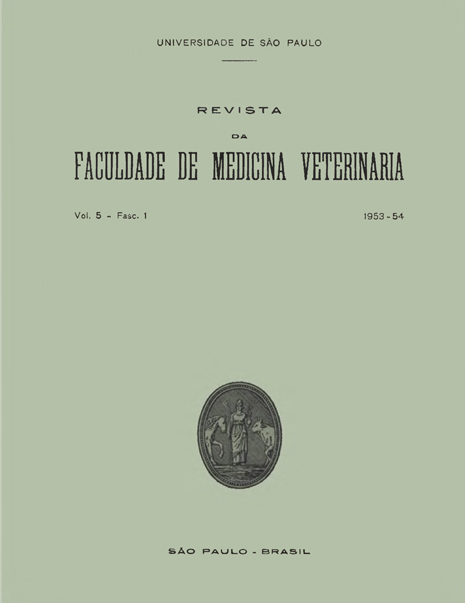Observações sobre casterofilose em equideos da região de Araçatuba, Estado de São Paulo, Brasil
DOI:
https://doi.org/10.11606/issn.2318-5066.v5i1p17-26Palavras-chave:
O artigo não apresenta palavras-chave.Resumo
Durante os anos de 1948 e 1949, numa fazenda da região de Araçatuba, neste Estado, onde algumas dezenas de cavalos, mortos por várias causas, foram necropsiados, todos êles apresentavam gasterofilose duodenal. A pesquisa de ovos de Gasterophilidae nos pêlos de cêrca de 300 equídeos existentes nos pastos da referida fazenda revelou-se positiva em todos êles. 20 cavalos e 5 burros foram então separados em báias individuais e durante 30 dias as suas fezes cuidadosamente examinadas. Findo êsse tempo, 19 dos cavalos e 1 dos burros tinham se mostrado positivos pelo encontro de larvas nas fezes, numa percentagem de 80% do total. 56 dessas larvas, cultivadas “in vitro” com terra levemente úmida, puparam, dando saída ao imago num prazo que variou de 15 a 25 dias, tempo esse consideravelmente menor do que o referido pelos autores, que mencionam 30 a 40 dias. Quatro gráficos são apresentados, um mostrando a curva de frequência dos diferentes tempos de eclosão dos adultos obtidos de 56 larvas e os outros mostrando as variações de temperatura, pressão atmosférica e umidade do ar durante as culturas. O estudo das larvas de 3º instar e dos adultos obtidos em culturas permite para a espécie o diagnóstico de Gasterophilus nasalis (Linnaeus, 1758).


